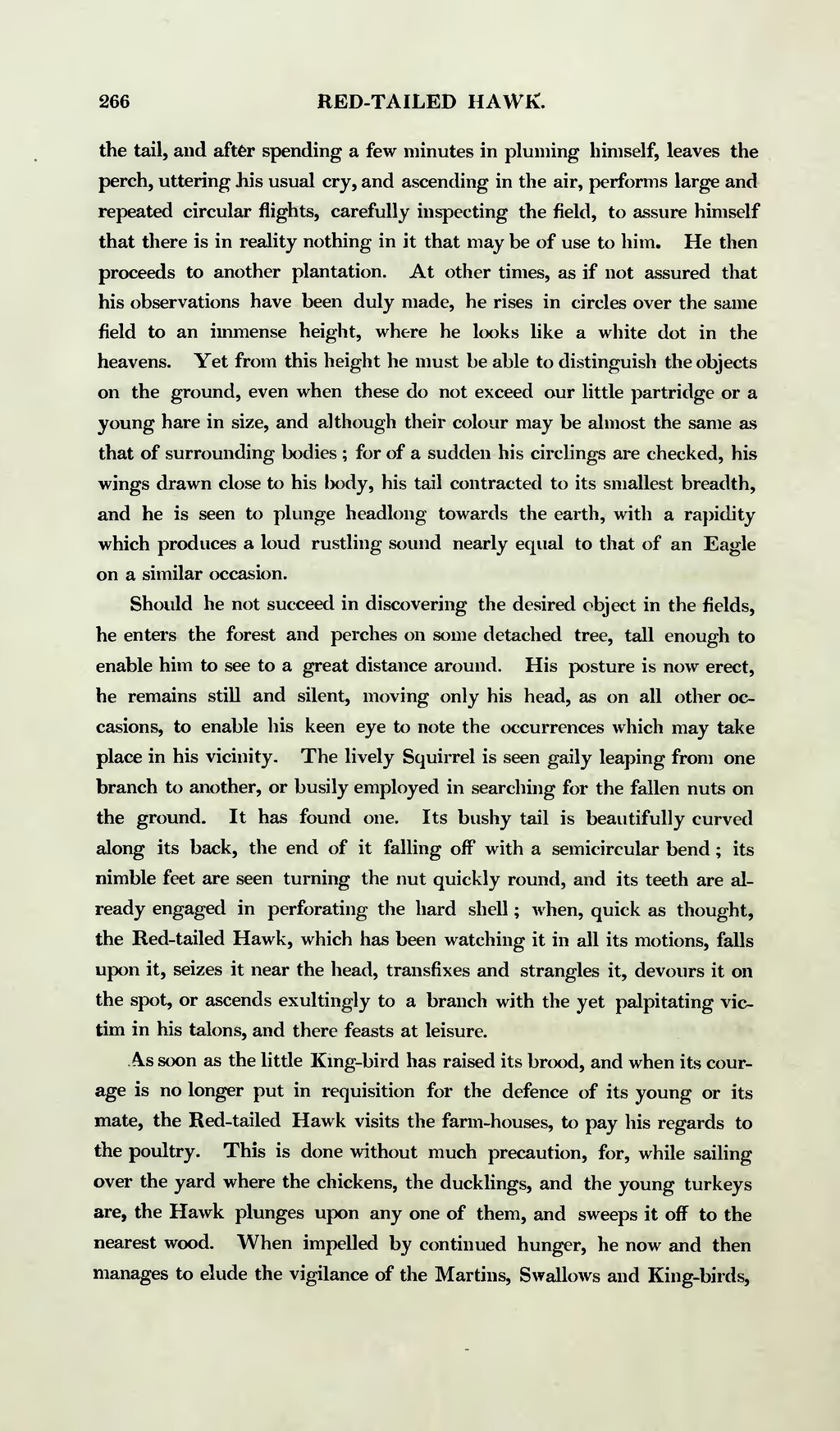the tail, and after spending a few minutes in pluming himself, leaves the perch, uttering his usual cry, and ascending in the air, performs large and repeated circular flights, carefully inspecting the field, to assure himself that there is in reality nothing in it that may be of use to him. He then proceeds to another plantation. At other times, as if not assured that his observations have been duly made, he rises in circles over the same field to an immense height, where he looks like a white dot in the heavens. Yet from this height he must be able to distinguish the objects on the ground, even when these do not exceed our little partridge or a young hare in size, and although their colour may be almost the same as that of surrounding bodies; for of a sudden his circlings are checked, his wings drawn close to his body, his tail contracted to its smallest breadth, and he is seen to plunge headlong towards the earth, with a rapidity which produces a loud rustling sound nearly equal to that of an Eagle on a similar occasion.
Should he not succeed in discovering the desired object in the fields, he enters the forest and perches on some detached tree, tall enough to enable him to see to a great distance around. His posture is now erect, he remains still and silent, moving only his head, as on all other occasions, to enable his keen eye to note the occurrences which may take place in his vicinity. The lively Squirrel is seen gaily leaping from one branch to another, or busily employed in searching for the fallen nuts on the ground. It has found one. Its bushy tail is beautifully curved along its back, the end of it falling off with a semicircular bend; its nimble feet are seen turning the nut quickly round, and its teeth are already engaged in perforating the hard shell; when, quick as thought, the Red-tailed Hawk, which has been watching it in all its motions, falls upon it, seizes it near the head, transfixes and strangles it, devours it on the spot, or ascends exultingly to a branch with the yet palpitating victim in his talons, and there feasts at leisure.
As soon as the little King-bird has raised its brood, and when its courage is no longer put in requisition for the defence of its young or its mate, the Red-tailed Hawk visits the farm-houses, to pay his regards to the poultry. This is done without much precaution, for, while sailing over the yard where the chickens, the ducklings, and the young turkeys are, the Hawk plunges upon any one of them, and sweeps it off to the nearest wood. When impelled by continued hunger, he now and then manages to elude the vigilance of the Martins, Swallows and King-birds,
